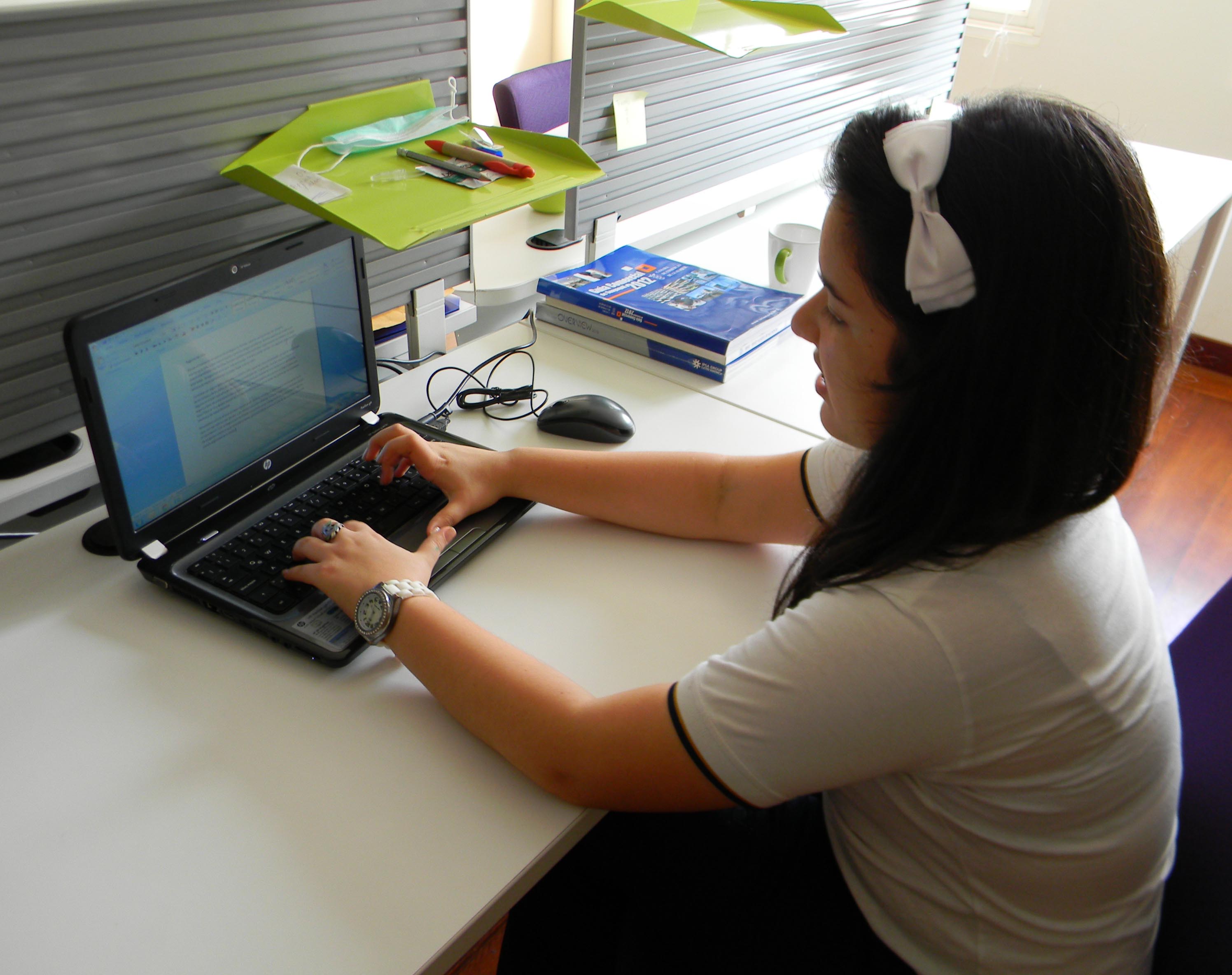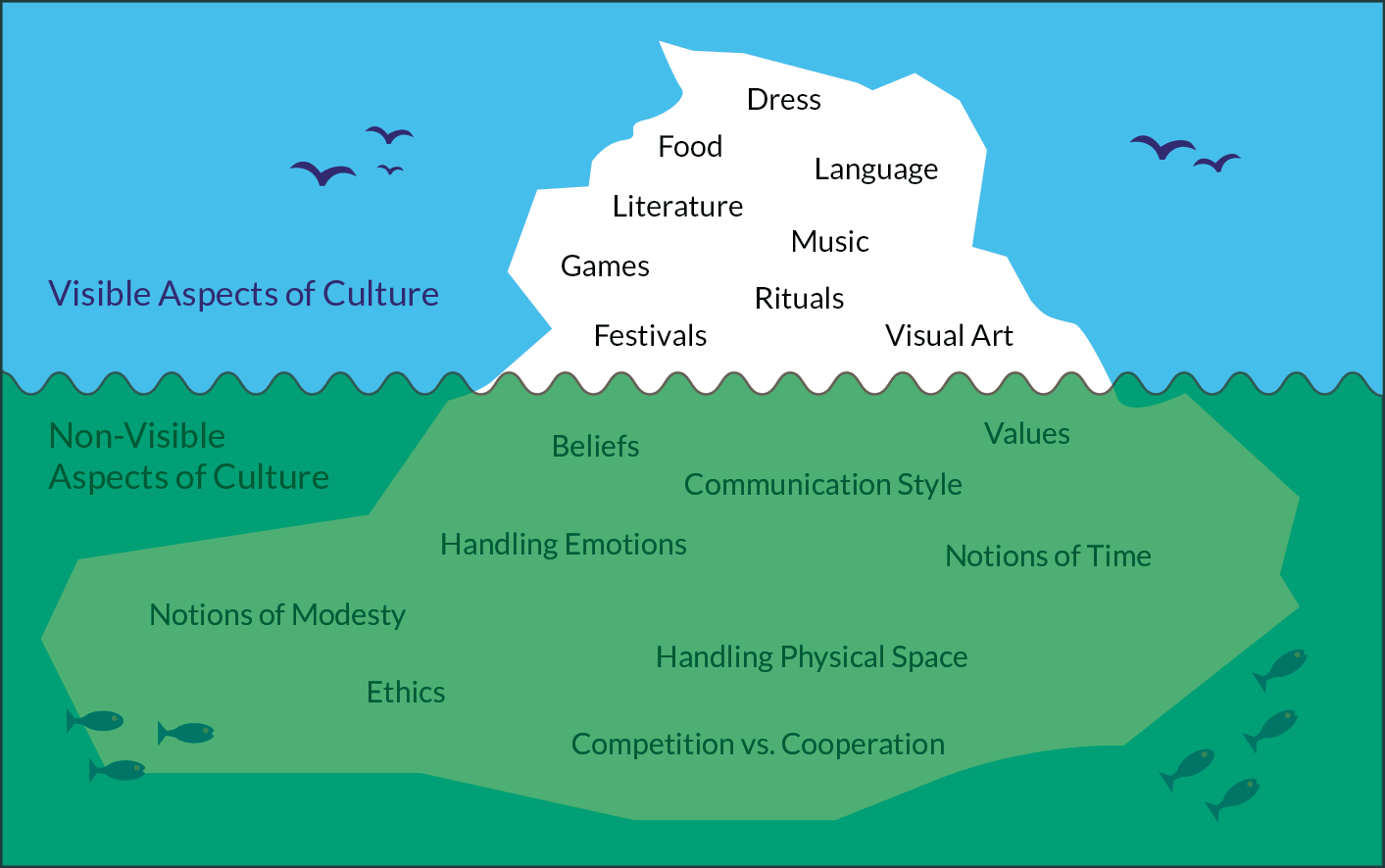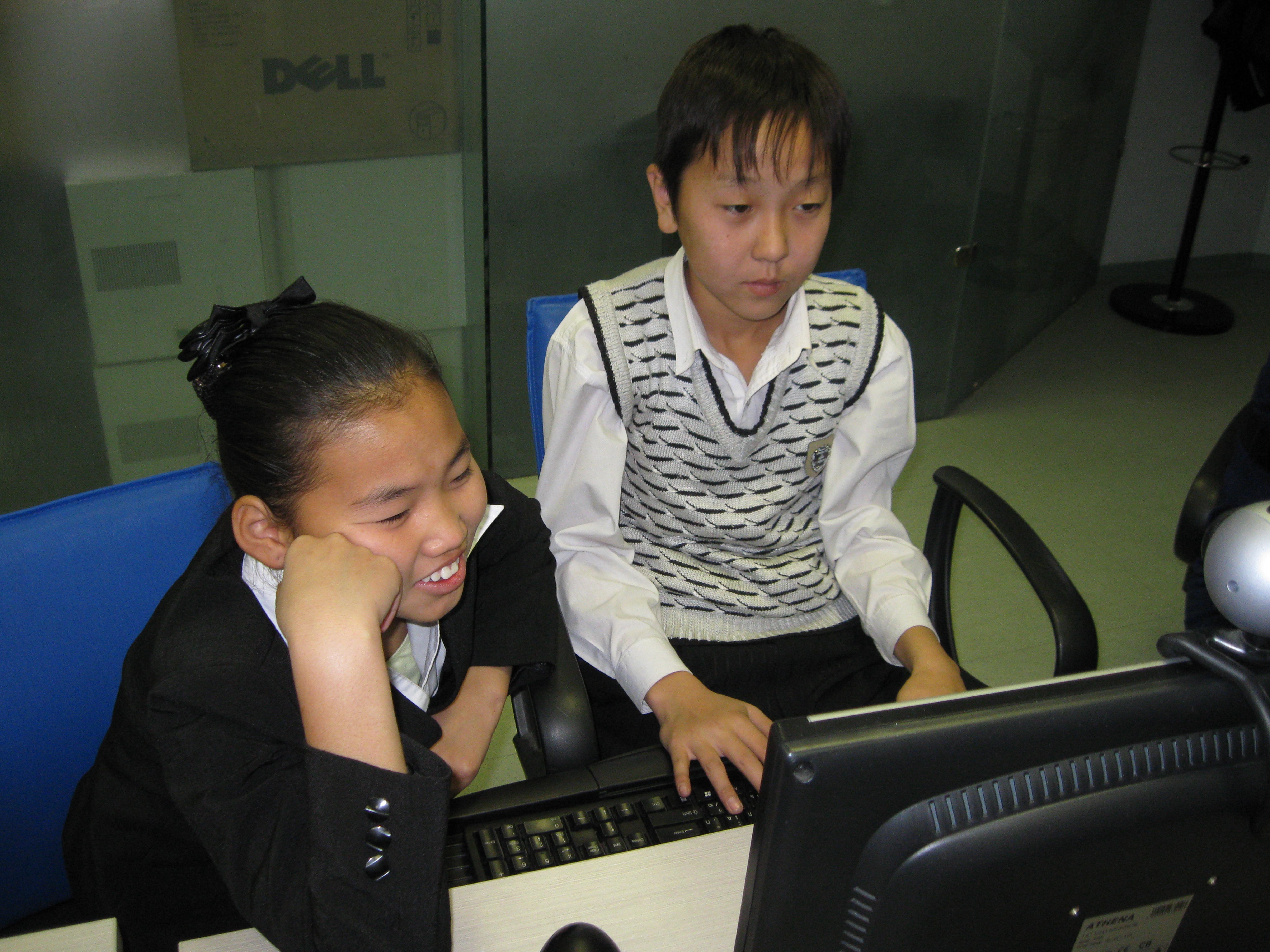Engaging in Digital Dialogue
- WHAT IS DIGITAL CITIZENSHIP?
- CROSS-CULTURAL COLLABORATION
- PREPARING STUDENTS FOR ONLINE COMMUNICATION
- PREPARE YOU STUDENTS WITH CLASSROOM ACTIVITIES
- NEXT STEPS
Before your students go online and begin to communicate with their peers around the world, it is important to consider some of the challenges that may arise and how to foster digital citizenship among students. In this module you will learn how to prepare students to collaborate cross-culturally and engage in responsible, effective online communication to ensure a meaningful project experience.
WHAT IS DIGITAL CITIZENSHIP?
 In today’s increasingly connected world, almost all students regularly use the Internet to share and retrieve information; they interact with others online which makes them digital citizens. Digital citizenship is the term used to describe the norms for appropriate and responsible technology use; it involves teaching users the rules of good citizenship online such as email etiquette, protecting private information and staying safe online. The explosion of connectivity and available online platforms increase the need to empower students to become responsible digital citizens. As an educator it is important to think about how your students can learn to protect themselves online and hold one another accountable for their online activity.
In today’s increasingly connected world, almost all students regularly use the Internet to share and retrieve information; they interact with others online which makes them digital citizens. Digital citizenship is the term used to describe the norms for appropriate and responsible technology use; it involves teaching users the rules of good citizenship online such as email etiquette, protecting private information and staying safe online. The explosion of connectivity and available online platforms increase the need to empower students to become responsible digital citizens. As an educator it is important to think about how your students can learn to protect themselves online and hold one another accountable for their online activity.
Teaching students to be good digital citizens also involves teaching them how to elevate their online interactions so that they get the most out of their collaborative experiences and become leaders in their online communities. Many youth today frequently connect online with others who share similar interests and viewpoints, but it is also important for youth to engage in digital dialogue with peers who may have different perspectives and opinions. When participating in online global collaborative projects, students have opportunities to challenge one another in a safe and supportive environment to expand their point of view and consider various ways to approach issues and problems.
- In short, responsible digital citizenship involves:
- Using the Internet and technology safely and effectively;
- Making good decisions and exhibiting proper etiquette online;
- Meaningful engagement with others and respect for differences.
Engaging in Digital Dialogue: Netiquette
Netiquette, which combines “net” and “etiquette”, is a term used to describe appropriate communication on the Internet. One important step in preparing students for digital dialogue is to make sure they understand the ways in which their online asynchronous communication differs from face-to-face, real-time communication. In asynchronous communication, participants are not necessarily online and communicating at the same time. Instead they will be posting their contributions to forum discussions, when they can get online and later return to read and answer comments posted by other participants. This type of communication mode is particularly helpful since time zone differences make it hard for all participants to be on the same kind of schedule. However, there can be challenges with this type of communication as well. Students need to learn that there are sometimes delays and that it may sometimes be difficult to receive answers or clarifications quickly. Therefore, it is important to teach students how to post appropriate, detailed, and timely messages online.
 TIPS FOR SAFE AND SMART ONLINE POSTS
TIPS FOR SAFE AND SMART ONLINE POSTS
- Remember, once it goes online it is there forever.
- Respect others’ privacy and your own (be careful about sharing phone numbers or addresses online).
- When you post, you are representing yourself, your school your community, and your country.
- Keep communication positive and constructive, and be aware of the power that your words have.
- The person on the other end of a digital communication can’t see your expression or hear your voice so state emotions or use emoticons to convey the tone of your message to avoid misunderstandings.
It is often helpful to discuss with students what constitutes appropriate online communication. Students can discuss how issues such as privacy, bullying, language, etc. relate to their online activity. Many teachers ask students to develop and post a list of rules or create a contract to hold one another accountable. (See resources for the iEARN Buddy Contract).
Building Collaborative Relationships Online
 Another important aspect of engaging in digital dialogue is learning how to build positive relationships with online partners, particularly when working on collaborative projects. When students demonstrate respect, build rapport, and cultivate friendships with their peers online they are more engaged and experience a more enriching collaborative exchange.
Another important aspect of engaging in digital dialogue is learning how to build positive relationships with online partners, particularly when working on collaborative projects. When students demonstrate respect, build rapport, and cultivate friendships with their peers online they are more engaged and experience a more enriching collaborative exchange.
When teachers emphasize the personal nature of student-to-student online global communication, students think more about the individuals or groups on the other end of the virtual exchange. For example, many teachers ask students to create and respond to messages and photos of introduction online or arrange a videoconference with another participating classroom before their joint project participation begins. As a result, students are more likely to develop and post thoughtful and engaging comments, questions, and media for their collaborative partners. It is also critical to emphasize the responsibility students have to respond to the comments, questions, and media shared by their peers online. As in any relationship, there should be a give and take. Truly collaborative projects involve ongoing, back and forth exchange rather than a series of one-way messages posted by project participants.
Best Practices for Quality Online Forum Interaction
Respond frequently
In general, frequent online posting is greatly encouraged to ensure that dialogue is ongoing and students have an opportunity to collaborate on project outcomes and products. It means a great deal to your students and the other project participants to know that they are still connected to others and being heard.
Quality vs. Quantity
Remember that in order to ensure quality process and final products, it is important for students to learn to invest time in preparing thoughtful, appropriate, substantive postings. You might recommend that students:
- Try to paraphrase the comments of their peers to let them know that they have listened and understand the content of their message;
- Tell their peers that the message made them think and/or acknowledge any details that were particularly valuable or helpful;
- Describe the emotions they felt when they read the post and the impact they had.
Create time and routine
Organization and time management are critical for any project and this includes scheduling adequate time for preparing, posting and responding to messages.
Encourage questions and critical thinking
Remind students to imagine the exchanges as oral conversations. What is missing that they need to convey or clarify (emotions, tone, empathy)? What more do they need to know? Could they ask for specific help or input on project activities?
Teach students to ask questions, state positives, and offer constructive feedback (E.g. I like… I wonder…)
>> Top
CROSS-CULTURAL COLLABORATION
 In addition to carefully considering how to use technology effectively and practicing good netiquette, students learning to be digital citizens in today’s global world also need to develop cross-cultural skills. In any online global project, students may be interacting with peers from many different countries and cultures so it is important to prepare them to broaden their perspective and consider how others around the world may perceive their online behavior.
In addition to carefully considering how to use technology effectively and practicing good netiquette, students learning to be digital citizens in today’s global world also need to develop cross-cultural skills. In any online global project, students may be interacting with peers from many different countries and cultures so it is important to prepare them to broaden their perspective and consider how others around the world may perceive their online behavior.
Because people may see the world in fundamentally different ways or behave differently based on their values and beliefs, it can be easy to misinterpret things people do in a cross-cultural setting. Working cross-culturally is a complex process in which understanding the context is everything. To keep from misunderstanding the behavior of others, encourage students to try and see the world from another point of view. Remind them that understanding and respecting cultural differences can lead to greater harmony at the school, community, and global level.
One of the most important aspects of cross-cultural work is having a thorough understanding of one’s own culture and how it shapes the way we think and behave in the world. Students who are aware of the formal and informal characteristics and norms of their own culture have a framework to help them consider how they interpret the behavior of others.
“Culture is like an iceberg. Some aspects are visible, and others are beneath the surface. Invisible aspects influence and cause the visible ones.”
~ Building Bridges Peace Corps Classroom Guide to Cross-Cultural Understanding
How might the “non-visible” aspects of culture affect online communication between global peers?

>> Top
PREPARING STUDENTS FOR ONLINE COMMUNICATION
 For most students, this will not be the first time they have interacted with others online. However, it may be the first time they are interacting with others online in an educational context. The challenge for educators is not necessarily teaching students how to use the technology tools to interact online but how to use these tools to achieve educational goals. In the context of project-based learning, one way to effectively use the technology is to engage students in digital dialogue that moves them toward producing their final product.
For most students, this will not be the first time they have interacted with others online. However, it may be the first time they are interacting with others online in an educational context. The challenge for educators is not necessarily teaching students how to use the technology tools to interact online but how to use these tools to achieve educational goals. In the context of project-based learning, one way to effectively use the technology is to engage students in digital dialogue that moves them toward producing their final product.
Another smart way to prepare participants is to keep parents in the loop. It can be helpful to communicate to parents that students will be involved in global collaboration with peers worldwide. This can take many forms, from phone calls to letters or, in some cases, permission slips to request that they agree to this use of interactive technologies. You may also wish to communicate your plans to your local administration so that you can create a local base of support and awareness of this innovative work.
>> Top
PREPARE YOUR STUDENTS WITH CLASSROOM ACTIVITIES
Below you’ll find some example activities and questions to do with your students:
Online Communication Exercise
Students will simulate digital dialogue by exchanging communication without seeing or hearing each other. Students will then reflect on the experience and discuss the potential miscommunication online. Click here to download an editable activity plan for this exercise.
- Divide the students into pairs and have them sit with their backs turned to one another.
- Ask students to carry on a conversation by passing hand-written communication back and forth. Their conversation could be anything from describing their weekend, explaining how to play a game, talking about a book or a movie, etc.
- Join together as a whole class and discuss what worked or didn’t work about the communication. Discuss ways of making the communication work better.
- As a class, create a list of guidelines for online communication and digital dialogue.
Welcome Letters
Introduce your classroom to their online, global community with a welcome letter. Click here to download an editable activity plan for this welcome letter exercise.
- Have students write up a sample letter to introduce the class and share their project interests.
- Pair students and have them exchange letters and get feedback from their peers.
- Discuss outcomes, considering various aspects of the intro letter such as subject headings, content, salutations/closings, spelling/grammar, etc.
- Create a final letter(s) and post it in the appropriate iEARN project forum in the iEARN Collaboration Centre.
Creating Class Guidelines
Work together to create guidelines for participating in online discussions. Click here to download an editable activity plan for this classroom guidelines exercise.
- Reflect on your existing classroom rules and school rules.
- Create online activity guidelines with your students to outline best behaviors and practices for participating in online discussions with iEARN.
Practical Tips for International Online Communication
- Do not assume to know if someone is male or female by his/her first name.
- Almost all countries use the metric system for measurement. Convert measurements to the metric system using an easy metric converter at. Science Made Simple (www.sciencemadesimple.com/conversions.html).
- Students in other countries may have to translate messages in English so try to avoid overuse of slang. If you do use slang expressions, be sure to explain the meaning of the expressions.
- Remember that your words might be interpreted or translated literally. Can you imagine what someone would think if you wrote that you have “dirty blond hair?”
- Try not to use abbreviations and explain any abbreviations that you do use.
- Remember that most of the world uses a 24-hour clock. Three in the afternoon would be written as 15:00.
- Most countries will write dates with the day, month, year or even year, day, month rather than writing month, day, year. Write out the name of the month to avoid confusion.
- Remember the reader cannot see your face so do not assume they know the tone or feeling of your message. Use emoticons (smiley faces and other symbols) and punctuation to emphasize parts of your message and convey feeling.
- Avoid sarcasm. It can sometimes be interpreted literally and misunderstood.
- Most of the world learns British English rather than U.S. English. Words such as centre or colour may look misspelled, but are actually correct for your peers.
>> Top
NEXT STEPS
In this module, you have learned about digital citizenship and how to support meaningful connections and responsible online behavior among students. You have also been presented with some tips, activities, and other resources to help students become more prepared for their online communication and cross-cultural collaboration. The next module will provide you with information about technology integration, such as the iEARN Collaboration Centre and other technology tools that allow you to connect and collaborate with others and enhance your online global collaborative experience during each stage of your project.
>> Top
